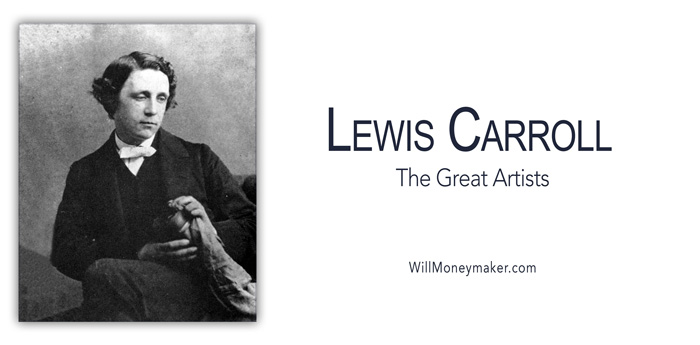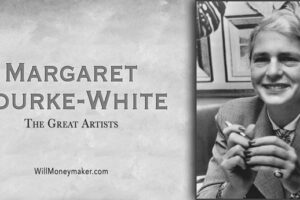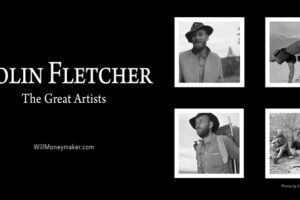Best known as the author of Alice’s Adventures in Wonderland and its sequel, Through the Looking Glass, Lewis Carroll was far more than an author. In fact, his name wasn’t Lewis Carroll at all. That was a pseudonym he used for his novels. His real name was Charles Lutwidge Dodgson, and he was born on January 27, 1832, in Cheshire, England. Throughout his life, Carroll had careers in writing, mathematics, photography, logic, and Anglican preaching. In all but writing, he used his legal name, but it is as Lewis Carroll history knows him best by.
Lewis’s parents were Charles Dodgson and Frances Lutwidge, a country parson and his wife. Charles and Frances were also cousins, and Charles gave up a brilliant career in academia to marry Frances, as he had previously attended Christ Church College at Oxford and obtained a double degree there. By the time Lewis was born, his parents already had two daughters, and Lewis was their first boy. They had eight more children after him, for a total of eleven children, who all enjoyed a genteel upbringing in a solidly upper-middle-class home, the kind of which a country person like their father could offer them.
Charles Dodgson was highly active in the church, and quite conservative, leaning toward a version of Anglicism that was close to Catholicism. He mediated many church disputes and eventually was named Archdeacon of Richmond. Young Lewis (aka Charles Jr.) eventually came to have a tenuous relationship with his father, as well as with the teachings of the Anglican Church.
Lewis was educated at home until he was 12, and was a voracious and early reader during that time. He read complex books meant for adults at a young age. He and most of his siblings suffered from a stammer that affected their public prospects going forward, but it did not stop him from enrolling at Richmond Grammar School when he was 12.
When he was 14, he enrolled at Rugby School in Rugby, England, which he ended up hating, and wrote later than nothing could persuade him to endure the three years he spent there again. The school was both a boarding and day school, and its conditions at the time were primitive, though the scholastic program was rigorous. Lewis might not have been happy there, but he excelled academically and was referred to by the headmaster as one of his most promising students to ever attend the school.
When he was 17, he graduated from Rugby and enrolled at his father’s alma mater at Oxford University when he was 18, in 1850. He had to wait for rooms to become available, so went as a day student before moving into the dormitories in 1851. He had only lived on campus for two days when he was ordered home because his mother had died at the age of only 47; the cause was given as “inflammation of the brain,” which in those days could mean either meningitis or a stroke.
Lewis went back to school, where his academic career veered between brilliance and indifference. There was no doubt he was smart and academically gifted; when he applied himself, academic success came easily to him. However, he was easily distracted, and so did not always work to the best of his ability. In spite of his inclination to not fully apply himself to his studies, Lewis graduated with honors in Mathematics, being first in his class for his Bachelor's degree. He was offered a Lectureship in Mathematics at Oxford in 1855, which he kept for the next twenty-six years, and taught or lectured in some capacity at Oxford for the rest of his life. This was in spite of losing a mathematics post-graduate scholarship due to his inability to fully focus on his studies.
Lewis had some health troubles besides his stammer, but nothing he could not surmount. He had a weak knee from an injury in middle age, and a weak chest from whooping cough when he was 17. He was also deaf in one ear from a fever he had as a very small child. However, he could sing and recite very well, at a time when these were important social skills and was also an excellent storyteller and charades player.
In 1856, Henry Liddell arrived at Oxford as a dean, bringing his wife and children with him. Lewis developed a close relationship with the Liddell family, and he would take the children on rowing trips and other activities. On one of these outings in 1862, he told them a story that became the outline for the Alice books. Many historians believe the Alice character was based on Henry Liddell’s daughter, Alice Liddell, though Lewis himself denied this. Lewis had been writing poetry and short articles since childhood, and some of these had been published in magazines, so he was no stranger to writing a story.
In fact, it was Alice Liddell who loved the story so much, she encouraged Lewis to write it down. This he did two years later and presented Alice with a written, illustrated copy of Alice’s Adventures in Wonderland. A family friend, George MacDonald, had read the story before it was presented to Alice, and he and his children loved it. They encouraged Lewis to seek publication for it, which he did. The book was published in 1865 and was wildly successful. His Lewis Carroll persona began receiving fan mail and much public attention, some of it unwanted. And, though he made vast sums of money on the book, he continued with his teaching position at Oxford, which he told others he disliked.
He published the sequel in 1871, and it has a much darker tone to the first one. Historians ascribe this to the recent death of Lewis’s father, which plunged him into a depression that lasted many years. He published a few other books, as well, which are respected literary works, but none were so popular and well-loved as the Alice books.
Lewis was also a photographer, though not a professional one. He began the hobby in 1856 and became quite skilled at it. It acted as an entry for him to high society, because photography was in such demand. He eventually opened his own amateur studio and took portrait photos of several famous and high society people, including Alice Liddell. He took over 3,000 photos during his time with the hobby, 1,000 of which survive today. He stopped doing photography and closed his studio in 1880 because it took too much of his time and money to operate it.
He was an inventor and is responsible for many letter-writing innovations, and a myriad of games, including an early version of what was to become Scrabble. In addition, he published many papers and books on mathematics using his real name of Charles Dodgson. He never mixed his Charles Dodgson and Lewis Carroll personalities, and the public was none the wiser that they were the same person during his lifetime.
He continued to teach at Oxford and is known to have only traveled abroad once, to Russia, as a preacher. He saw some parts of Europe on the way there and back.
Lewis Carroll died just two weeks shy of his 66th birthday of pneumonia at his sister’s house. This was January 14, 1898. He was buried in Guildford, England at the Mount Cemetery. He never married or had children. His family suppressed this information in his letters when they published them, which left his sexuality in question for almost a century. It seems now that he was merely a confirmed bachelor who enjoyed relationships with both single and married women.
In 1982, Lewis’s great-nephew had a memorial stone dedicated to him placed in the famous Poet’s Corner of Westminster Abbey.





